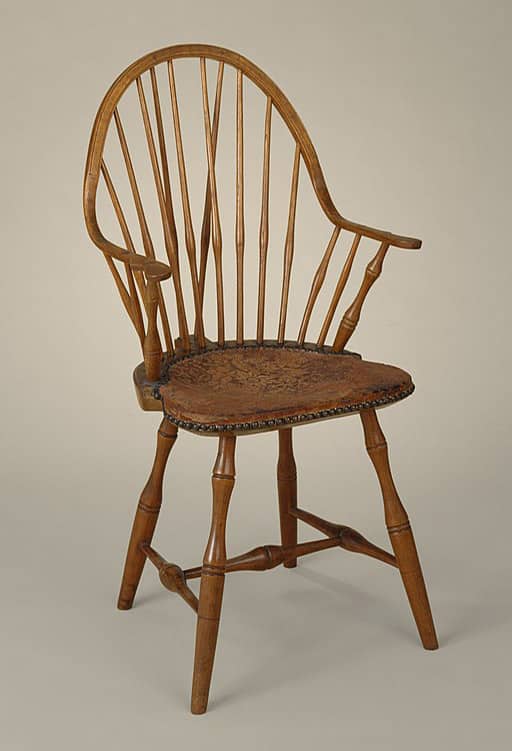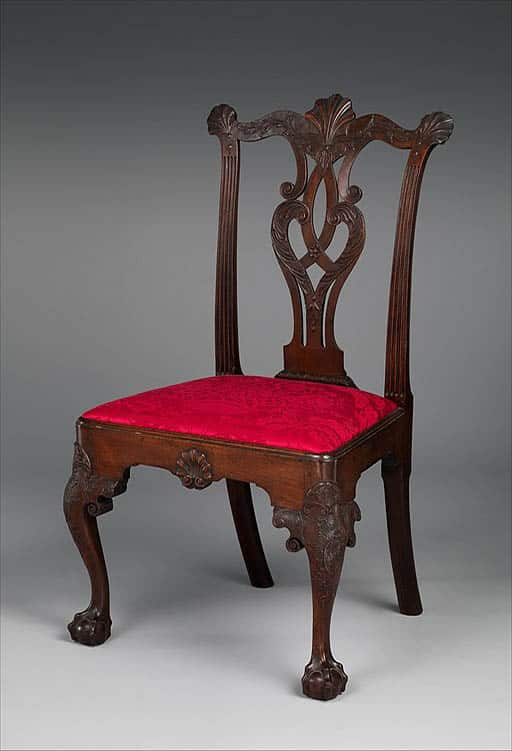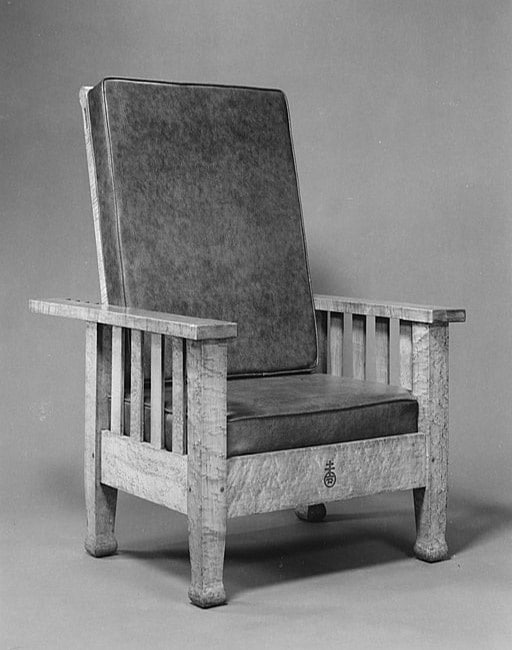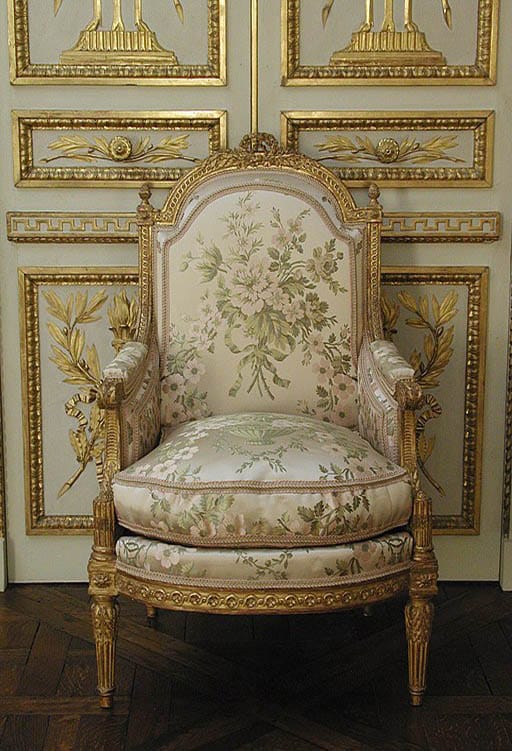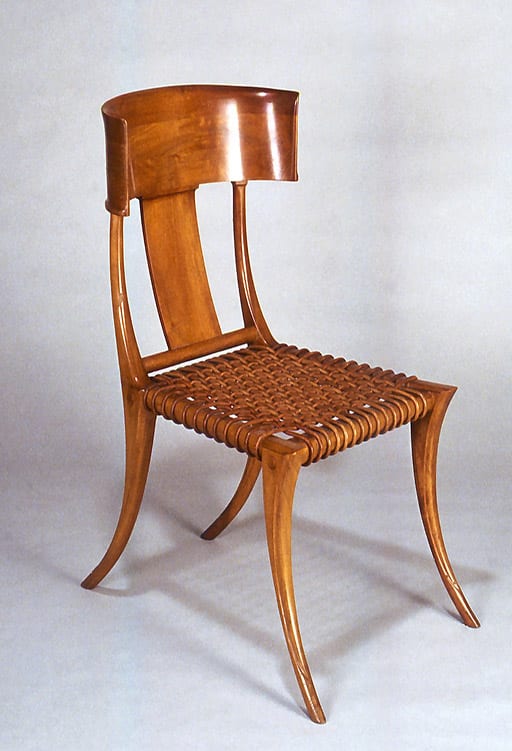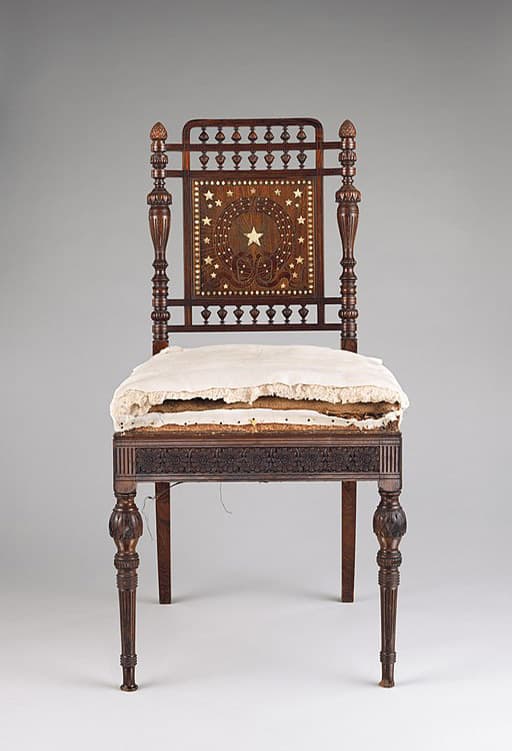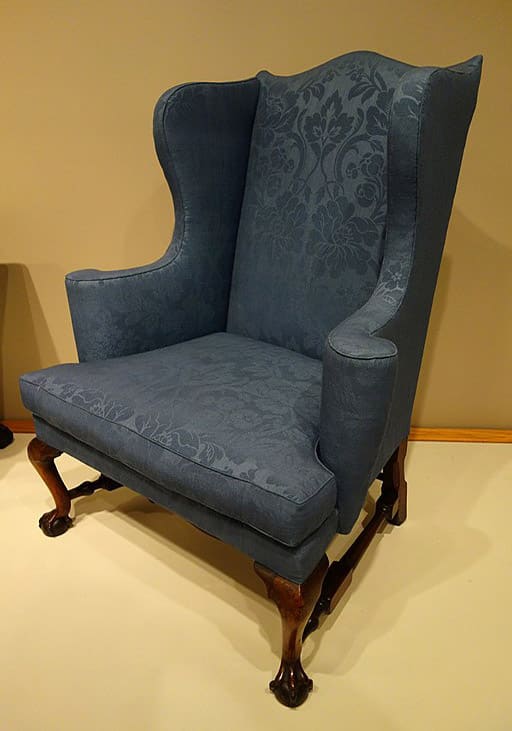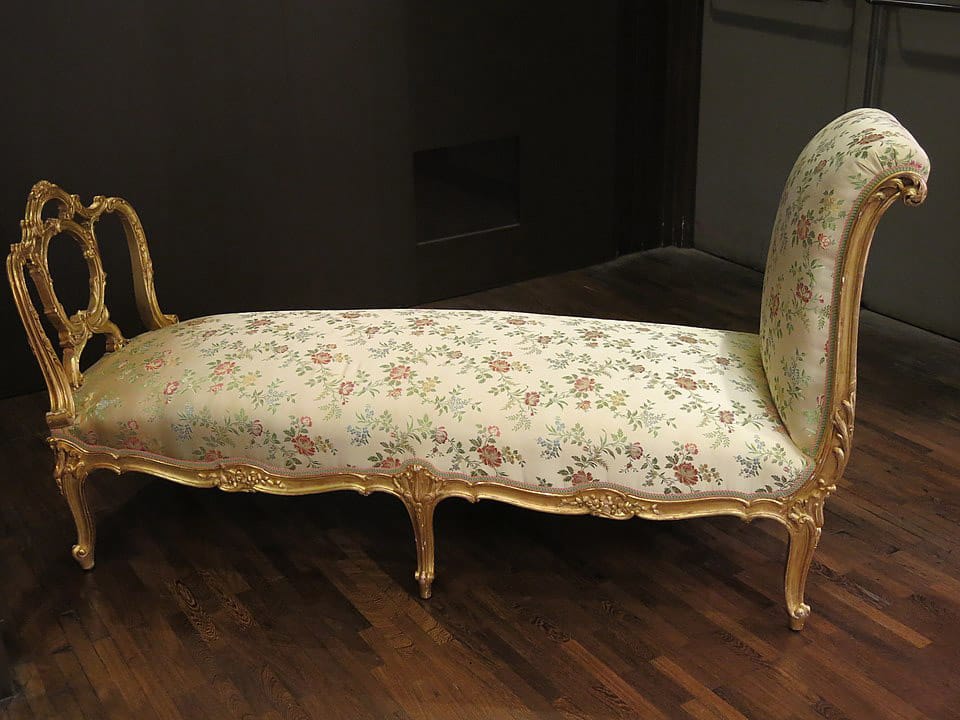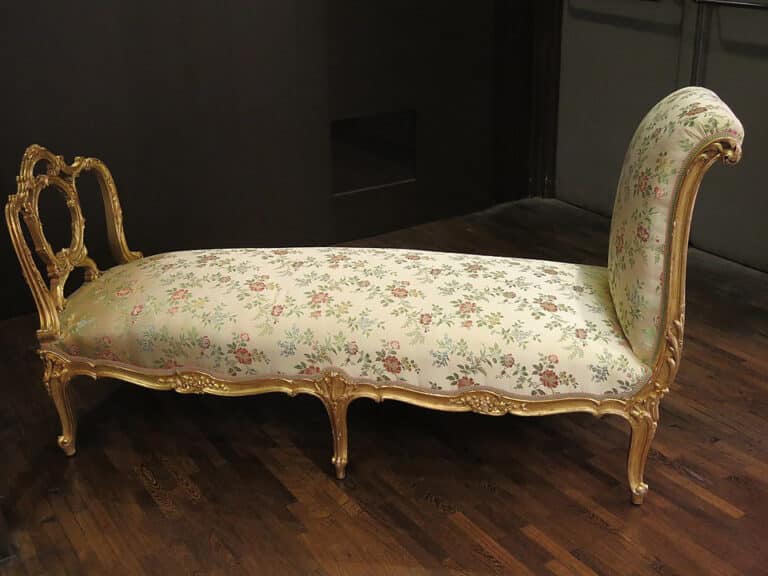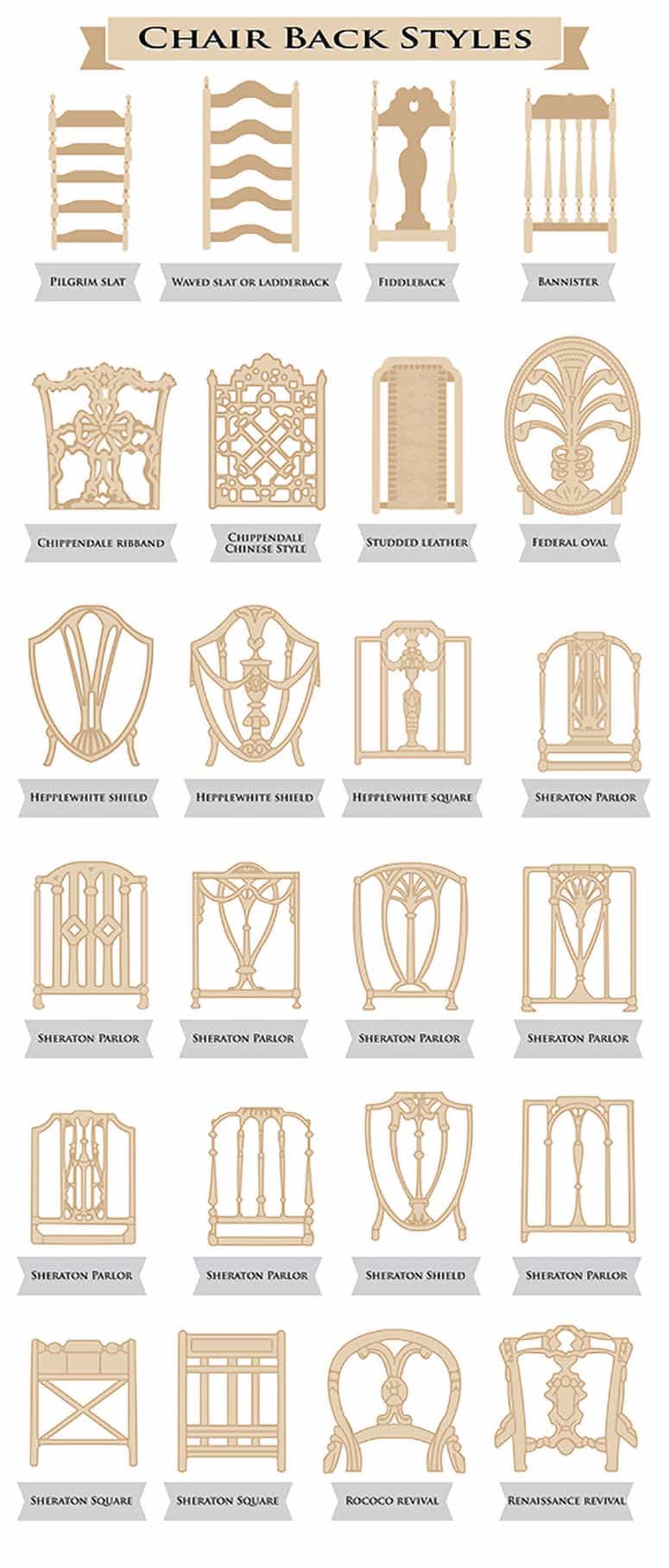How to Identify Antique Chairs, A Comprehensive Guide
Do you have a chair that you’re not sure is an antique or unsure if its worth anything? Are you curious about how to identify antique chairs but don’t know where to start? If so, this guide is for you. In this article we look at the many forms of chairs that have been produced throughout history. So, whether you’re a seasoned pro or just starting out, read on for all the information you need to know about identifying antique chairs.
The first thing to look for right away is the overall design of the chair. What time period is it from? This will allow you understand the period of origin. Antique chairs come in a wide variety of designs, from the simple and functional to the ornate and decorative. Many different styles were popular at different times throughout history, so knowing when the chair was made can be a big help in identifying it.
By examining the style or period, you can usually tell how old antique furniture is. There are several main periods that antique chairs can be classified into which are:
- The Early Periods: Prehistoric through to the 12th century
- The Gothic Period: 13th and 14th centuries
- The Renaissance Period: 15th and 16th centuries
- The Baroque Period: 17th century
- The Rococo Period: Late 17th to early 18th centuries
- The Neoclassical Period: Mid 18th to early 19th centuries
- The Victorian Period: Mid 19th century
- Modernist Movement: Late 19th and 20th centuries
Another thing to look at is the construction of the chair. Antique chairs were often handmade, so they may have some irregularities in their construction. This can be another clue as to their age and value. Finally, take a look at any markings, signatures or labels on the chair. These can give you important information about who made the chair and when it was made.
Now that you know what to look for, let’s take a more detailed look at some of the different types of antique chairs that you might encounter.
Windsor Chair
One of the most common and popular styles of antique chairs is the Windsor chair. These chairs were first made in England in the 17th century and were named after the English town where they were first produced. They became very popular in America in the 18th century and are still made today.
Windsor chairs are characterized by their intricate spindle back and turned legs. These chairs are entirely made of wood. The legs are straight, but they extend outward and some include arms. This chair was first created as a simpler alternative to the heavy ornate chairs of the time period.
Hepplewhite Chair
Let’s take a look at some of the more rare and valuable types of antique chairs. One of these is the Hepplewhite chair. These chairs were first made in England in the late 18th century and are named after their designer, George Hepplewhite. They are characterized by their straight lines and simple designs. Hepplewhite chairs are very rare and can be worth a lot of money.
Chippendale chair
Another rare and valuable type of antique chair is the Chippendale chair. These chairs were first made in England in the mid-18th century and get their name from their designer, Thomas Chippendale. They are characterized by their ornate designs and claw-foot legs. They and are often very valuable.
Fateuil Chair
Fateuil armchairs were first made in France during the reign of King Louis XVI. Also known as “Gondola” or “Bergere” chairs, they were designed for comfort and style. Some are upholstered with open side arms. They often had low backs and no arms, making them perfect for sitting in a bedroom or dressing room. These chairs are timeless and always in style.
Morris Chair
The Morris chair is a type of reclining chair that was first designed by William Morris, Morris & Co., in the late 19th century. It is characterized by its high, deep recliner back and arms, which make it very comfortable. This large cushioned chair typically has slatted sides and bow arms.
Bergere Chair
This is a French-style armchair that was first made in the 18th century. It is characterized by its large cushioned upholstered back and arms. The back shapes vary and many chairs have their own styles such as: gilded decorations, painted colors or simple natural wood. They typically have cabriole legs. The bergere chair is a very comfortable chair that is perfect for any room in the house.
Klismos Chair
The klismos chair is a classic Greek design that has been around for centuries dating back to 5th century Greece and became popular in the 18th century Neoclassical period. This type of chair is characterized by its curved back and slender legs. They are often made of wood or metal and can be found in many different styles.
Shaker Chair
Shaker chairs are a type of furniture that was first created by the Shakers, a religious group that lived in the northeastern United States in the 18th and 19th centuries. The Shakers were known for their simple, clean designs, and shaker chairs reflect this aesthetic. Famous for the slate-back rocking chair. These chairs are characterized by their straight lines, simple shapes, and lack of ornamentation.
Savonarola Chair
Savonarola chairs are Renaissance-style furniture that was popular in the 15th and 16th centuries. The name comes from the Italian preacher and reformer Girolamo Savonarola, who was known for his simple lifestyle. These chairs are characterized by their X-shaped frames and often have turned legs. They were originally designed as folding chairs, but many non-folding versions have been made over the years.
Curule Chair
This chair is from ancient Roman and was first used in the late Republic or early Empire. They were originally designed as folding chairs, but many non-folding versions have been made over the years. Curule chairs are characterized by their X-shaped frames and often have turned legs. They were once reserved for high-ranking officials, but today they are popular among collectors and can be quite valuable.
Side Chairs
Side chairs are simply chairs that are not intended to be the primary seating in a room. They can be used as accent pieces or for additional seating when needed. Antique side chairs come in many different styles, so it’s important to do your research before buying one.
Wingback Chair
A wingback chair has tall “wings” attached to the back of the chair that extend to the floor on either side. These wings were originally designed in England during the late 17th century. The tall upholstered fabric and tall-backed chair provides extra warmth in front of a fireplace, but they also serve as a stylish addition to any room.
Chaise Longue
A chaise longue also known as “long chair” in French became popular in France during the 16th century. Typically used for day bed and was upholstered. In the 17th and 18th centuries, it was common to see these chairs with large rolled arms and tufted upholstery. This is a type of chair that has a long, angled back that allows the person sitting in it to recline. They are often found in bedrooms or living rooms and can be quite comfortable. It is perfect for relaxing, reading, or taking a nap often depicted in Greece and Egyptian civilizations.
How to Identify Antique Chairs,
A Comprehensive Guide
Do you have a chair that you’re not sure is an antique or unsure if its worth anything? Are you curious about how to identify antique chairs but don’t know where to start? If so, this guide is for you.
The first thing to look for right away is the overall design of the chair. What time period is it from? Antique chairs come in a wide variety of designs, from the simple and functional to the ornate and decorative. Many different styles were popular at different times throughout history, so knowing when the chair was made can be a big help in identifying it.
Another thing to look at is the construction of the chair. Antique chairs were often handmade, so they may have some irregularities in their construction. This can be another clue as to their age and value. Finally, take a look at any markings, signatures or labels on the chair. These can give you important information about who made the chair and when it was made.
Now that you know what to look for, let’s take a more detailed look at some of the different types of antique chairs.
Windsor Chair
One of the most common and popular styles of antique chairs is the Windsor chair. These chairs were first made in England in the 17th century and were named after the English town where they were first produced. They became very popular in America in the 18th century and are still made today.
Windsor chairs are characterized by their intricate spindle back and turned legs. These chairs are entirely made of wood. The legs are straight, but they extend outward and some include arms. This chair was first created as a simpler alternative to the heavy ornate chairs of the time period.
Hepplewhite Chair
Let’s take a look at some of the more rare and valuable types of antique chairs. One of these is the Hepplewhite chair. These chairs were first made in England in the late 18th century and are named after their designer, George Hepplewhite. They are characterized by their straight lines and simple designs. Hepplewhite chairs are very rare and can be worth a lot of money.
Another rare and valuable type of antique chair is the Chippendale chair. These chairs were first made in England in the mid-18th century and get their name from their designer, Thomas Chippendale. They are characterized by their ornate designs and claw-foot legs. They and are often very valuable.
Fateuil armchairs were first made in France during the reign of King Louis XVI. Also known as “Gondola” or “Bergere” chairs, they were designed for comfort and style. Some are upholstered with open side arms. They often had low backs and no arms, making them perfect for sitting in a bedroom or dressing room. These chairs are timeless and always in style.
The Morris chair is a type of reclining chair that was first designed by William Morris, Morris & Co., in the late 19th century. It is characterized by its high, deep recliner back and arms, which make it very comfortable. This large cushioned chair typically has slatted sides and bow arms.
This is a French-style armchair that was first made in the 18th century. It is characterized by its large cushioned upholstered back and arms. The back shapes vary and many chairs have their own styles such as: gilded decorations, painted colors or simple natural wood. They typically have cabriole legs. The bergere chair is a very comfortable chair that is perfect for any room in the house.
The klismos chair is a classic Greek design that has been around for centuries dating back to 5th century Greece and became popular in the 18th century Neoclassical period. This type of chair is characterized by its curved back and slender legs. They are often made of wood or metal and can be found in many different styles.
Shaker chairs are a type of furniture that was first created by the Shakers, a religious group that lived in the northeastern United States in the 18th and 19th centuries. The Shakers were known for their simple, clean designs, and shaker chairs reflect this aesthetic. Famous for the slate-back rocking chair. These chairs are characterized by their straight lines, simple shapes, and lack of ornamentation.
Savonarola chairs are Renaissance-style furniture that was popular in the 15th and 16th centuries. The name comes from the Italian preacher and reformer Girolamo Savonarola, who was known for his simple lifestyle. These chairs are characterized by their X-shaped frames and often have turned legs. They were originally designed as folding chairs, but many non-folding versions have been made over the years.
This chair is from ancient Roman and was first used in the late Republic or early Empire. They were originally designed as folding chairs, but many non-folding versions have been made over the years. Curule chairs are characterized by their X-shaped frames and often have turned legs. They were once reserved for high-ranking officials, but today they are popular among collectors and can be quite valuable.
Side Chairs
Side chairs are simply chairs that are not intended to be the primary seating in a room. They can be used as accent pieces or for additional seating when needed. Antique side chairs come in many different styles, so it’s important to do your research before buying one.
Wingback Chair
A wingback chair has tall “wings” attached to the back of the chair that extend to the floor on either side. These wings were originally designed in England during the late 17th century. The tall upholstered fabric and tall-backed chair provides extra warmth in front of a fireplace, but they also serve as a stylish addition to any room.
Chaise Longue
A chaise longue also known as “long chair” in French became popular in France during the 16th century. Typically used for day bed and was upholstered. In the 17th and 18th centuries, it was common to see these chairs with large rolled arms and tufted upholstery. This is a type of chair that has a long, angled back that allows the person sitting in it to recline. They are often found in bedrooms or living rooms and can be quite comfortable. It is perfect for relaxing, reading, or taking a nap often depicted in Greece and Egyptian civilizations.
Do you have a treasured gem? Antiques chairs are works of art because they have individuality and are constructed using high-quality materials and skilled craftsmanship. One way to tell if a chair is an antique is to look at the construction. Antique chairs were typically made by hand, so they will usually have some irregularities in the wood or fabric. If you see a perfectly uniform chair, it is likely not an antique.
These finely crafted chairs are timeless treasures from the past. They enhance a room’s unique feel and never go out of style. Built to last and made by masters these antique chairs are true hallmarks of history. So if you think you may have one of monetary value, it is always best to get it looked by a professional before selling it.
Collect what you love and cherish. This post has just scratched the surface when it comes to identifying antique chairs. Once you’ve identified the type of chair, you can start to research its value and history.
Stay tuned for more comprehensive guides on how to identify antiques, antiquities, artifacts and fine-furniture.
If you enjoyed this post and would like to see more antique chairs you can view them here on Museum Quality Restoration Service’s Pinterest board.
Thanks for reading and happy hunting!
Also, do you have an antique chair that you’re not sure about? Email me I will do my best to help you.
For more detailed information, be sure to check out some of the projects and About Us section to know more about Museum Quality Restoration Services.
Resources and references: Charlecote, English Antique Furniture & Accessories, “English Furniture Periods.” https://www.charlecoteantiques.com/english-furniture-periods/ The Spruce Crafts,“Twelve Periods of American Furniture.” https://www.thesprucecrafts.com/twelve-periods-of-american-furniture-3536520 Paris Apartment, “It’s an Obsession.” https://parisapartment.wordpress.com/2016/11/16/its-an-obsession/ Pinterest illustrations, click here.

